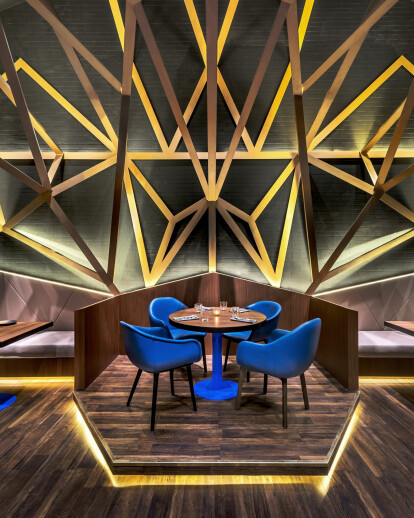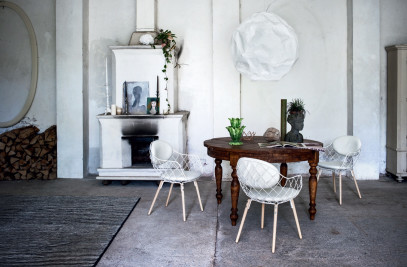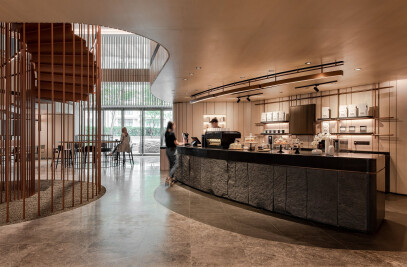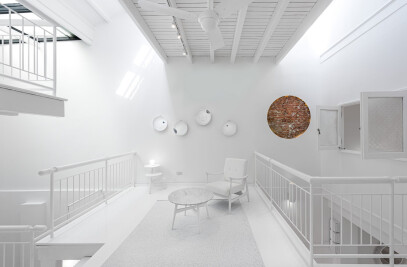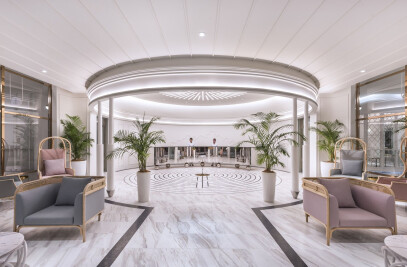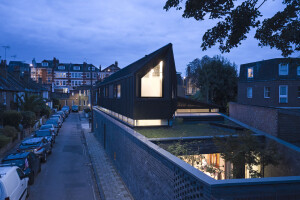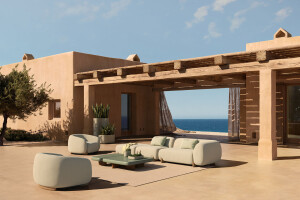The VUE Hotel brand exemplifies the new wave of locally-rooted boutique hospitality experiences, a global cultural phenomenon now finding roots in China. “VUE” in French means “view” or “a way to see” and VUE hotels aspire to present a fresh way of “seeing” hospitality design and experiences. VUE’s DNA upends conventional Chinese notions of hospitality and is defined by 4 core pillars: 1. Encourages Socialising; 2. Transcendence of culture; 3. Delightful & Whimsical; 4. Relaxed & Inviting.
Each bespoke VUE property will draw richly from the culture and heritage of its neighborhood, yet always transcending it with a contemporary and whimsical twist. Unapologetically modern in its approach, the brand embodies the desires of the urbane traveller; creating comfortable and inviting social spaces that are paired with intriguing art and innovative cuisine.
With expansion planned for multiple properties in key cities across China, the VUE Hotel brand is pioneered by Wuhai, CEO of Vue Hotels, and created by internationally acclaimed design studio Ministry of Design, who are responsible for the holistic strategy, branding and all aspects of design & art creation. Vue Hotel is part of a growing global phenomenon of locally rooted boutique hospitality brands, which aim to immerse its guests in authentic and bespoke experiences.
VUE is also a Member of Design Hotels™ and is its first member in Beijing, China.
VUE Houhai, Beijing VUE Hotel’s first flagship property is located in Beijing, in the Hutong district of Houhai. The hotel compound sits on the edge of the picturesque Houhai lake, and neighbours a verdant public park, as well as historic Hutong houses which are still used by local inhabitants today. Located along Houhai’s banks are a district of bars and vibrant cafes. Undertaken as a major adaptive-reuse exercise, the hotel comprises a series of artistically transformed quasi-historic buildings from the 1950’s. This intriguing hotel compound invites you to explore its many facets where you will discover a series of landscaped gardens, a bakery café fronting the bustle of the Hutong streets, a signature restaurant in a warehouse, a rooftop bar overlooking the lake, a gym and over 80 rooms and suites, several with private gardens or with views overlooking the park or lake.
Major Design Touchpoints A) Architecture and Landscape The hotel compound comprises a series of quasi-historic buildings from the 1950’s, with a variety of architectural styles and approaches. Although they were designed primarily in the Chinese vernacular, the different buildings span a range of ornamentation from highly decorative roof eaves, characterful gargoyles, sculptured balconies and latticed window frames, to pared-back jack roofs and plain brick work wall finishes. Our design approach has been to unify this diverse collection through colour and landscaping.
All the buildings are conceptually draped over with a dark charcoal grey coat of paint, upon which key architectural details have been highlighted in a contemporary gold patina. These featured elements shimmer against the dark backdrop and their prominence suggests an informal “cataloguing” of key architectural details. As guests explore the compound, this “catalogue” of details gradually brings into focus the distinction between the historical versus the contemporary: a subtle juxtaposition, which highlights the rich tension arising from any adaptive reuse design.
Conceptually, the design harnesses all the “left-over” spaces in-between each building, to tie the compound into a single holistic experience. These in-between spaces are treated graphically with an “ice-ray” lattice pattern inspired by traditional Chinese screens. Treated three-dimensionally, hardscaped floors and passageways rise to become private balconies or garden enclosures.
B) FAB Cafe and Reception Upon arrival and enroute to the Reception, the guest experience first begins at one of VUE Hotel’s social hubs: the FAB café and bakery. This casual and vibrant venue fronts the buzzy Hutong main road where scenes of daily local life and culture can be witnessed. With both terrace alfresco as well as indoor seating, FAB is the perfect place for breakfast, a quick snack or a rousing cup of coffee. The interior design approach draws from characteristics of the street front in its use of materials and colour accents. A wide range of seating nooks and furniture allows the FAB experience to feel varied and engaging. The Reception is the first experience exclusive to overnight guests. Intimate and personal, the check-in experience is casual but comfortable. Guests pass a concierge point where the property’s first feature installation artwork is placed and into the Reception, where the property’s signature colour scheme and dramatic spatial design themes are manifested.
C) The Pink Rabbit Restaurant and Rooftop Moon Bar Housed at the Lakeside-edge of the hotel compound in a former warehouse building, VUE Hotel’s signature restaurant and rooftop bar offers an extensive tapas sharing menu and cocktails/liquor selection. Upon approaching the Pink Rabbit from the adjacent courtyard, guests encounter a whimsical installation atop the building’s roof of 2 gigantic wireframe rabbits. The Pink Rabbit’s casual but sophisticated atmosphere plays itself out in the interior design. The exposed metal & wood trusses, open display kitchen, lounge style seating paired with a feature bar and DJ counter, contribute to the overall upbeat vibe. A series of private dining rooms and quiet garden dining zone provide opportunities for exclusive entertaining, whilst the rooftop Moon Bar and Jacuzzi pool offer a treetop alfresco experience, with full views to the picturesque Houhai lake and park.
D) Guests Rooms and Gym When conceptualizing the essence of its hotel rooms, the brand decided to celebrate innovative spatial design but pair it with a level of creature comforts that would rival the best design hotels in the market. High on the agenda was also a desire to balance an unapologetically contemporary design approach with locally inspired culture and imagery. The resulting rooms are whimsically surprising but yet familiar. Spaces are unexpectedly divided with the use of colours, tones and materials, whilst installation art in every room continue the hotel’s overarching narrative. Dramatic bath spaces complement restful sleeping spaces. Beyond the standard rooms, the suites and garden rooms extend the guest experience with generous living and dining spaces, oversized bathrooms and alfresco lounge areas. The gym is designed to extend the overall design scheme and bring it to the next level of drama and vibrancy. Mirrored surfaces and latticework create a space conducive to health and wellness.
E) Art Installation and room art Each VUE property is designed around a central narrative inspired by its locale or culture. For VUE Houhai Beijing, the narrative drew inspiration from the lake and its animal inhabitants. In our imaginings, the presence of VUE in the Houhai neighbourhood has a magical and whimsical transformative effect on the animal inhabitants. These friendly animals (foxes, rabbits, deer) are transformed anthropomorphically from mere animals to become more human-like, in the same way animals in cartoons often adopt human personas. In becoming more human-like, the animals also begin to cultivate a sense of curiosity of the world around them and like “tourists”, begin to explore the attractions around the lake and eventually to iconic historic sites around Beijing – the Great Wall, the Forbidden City”. These art installations are dotted throughout the compound and are also found in each room. Other art installations, which parallel this narrative but focus more keenly on the theme of the “transcendence of Chinese culture” can be found in other public spaces such as lift lobbies and corridors.
